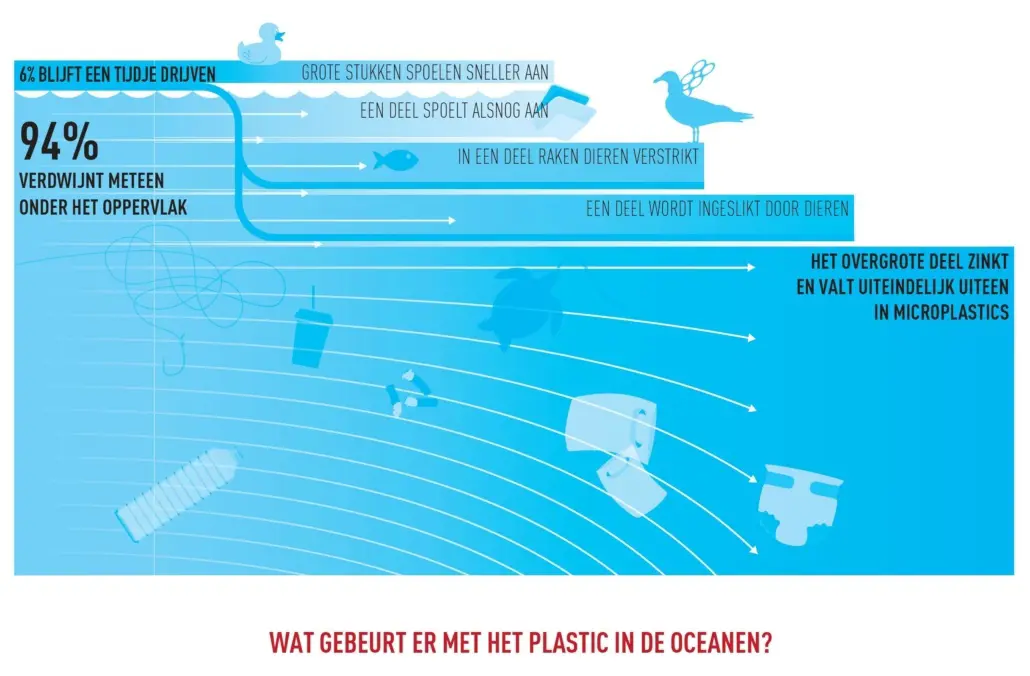This is due to sunlight, oxidation or friction, or by animals nibbling on the plastic. This plastic break down process goes on forever, although the speed depends on the circumstances. There are beaches where you not only see large pieces, but also countless fragments, colored or faded — the smallest pieces can no longer be distinguished from grains of sand. Fragments become microplastics and microplastics become nanoplastics. The latter are so small that they are barely visible even under the most advanced microscopes.
Plastic breaking down creates a bouillon

If plastic is non-biodegradable, it does break down until it is no longer visible by the naked eye. A single plastic bag can fall apart into millions of plastic pieces. As a result of the ongoing break down process, the number of micro- and nanoplastic particles is increasing exponentially. This changes the composition of the plastic soup and for this reason, some prefer to speak of ‘plastic bouillon’ rather than plastic soup. All these small particles of plastic never fully decompose and are literally everywhere: in water, soil, and air. Because they are light, they are easily transported across long distances. In 2014, it was discovered by accident that polar ice appears to be full of microplastics. It was then assumed that microplastics were carried along with ocean currents and then caught up in the ice. It is now clear that microplastics are also carried by the wind. It ‘rains’ microplastics every day, even in the most remote regions of the world. Also, at the deepest place on earth, where the ground is nearly eleven kilometers below the surface of the water, plastic microfibers have been found.
How harmful is it?
It has become evident that microplastics can no longer be completely removed from the natural world. This would not be a problem if we were sure that they are harmless in the environment. The point is that there are various indications that they are harmful. What we know is that all animal species, including humans, ingest them and that the smallest particles – the nanoplastics – can spread throughout the body and possibly reach the organs, including the brain. We also know that the concentration of these small particles in the environment is increasing, and it’s likely that the concentration of particles in humans is likely doing the same. There is no escaping it, and we can only hope that the consequences in the short and long term are better than expected. The Plastic Soup Foundation is committed, through the Plastic Health Coalition, to calling for more research into the harmful effects of microplastics.


.png)

